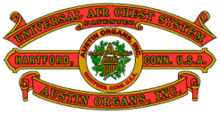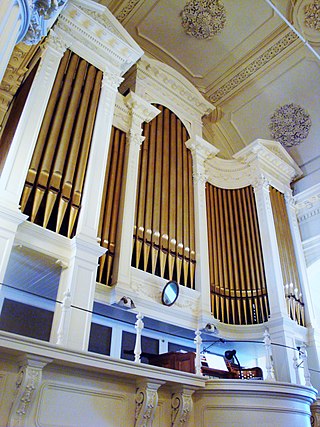
Aeolian-Skinner Organ Company, Inc. of Boston, Massachusetts was an American builder of a large number of pipe organs from its inception as the Skinner Organ Company in 1901 until its closure in 1972. Key figures were Ernest M. Skinner (1866–1960), Arthur Hudson Marks (1875–1939), Joseph Silver Whiteford (1921-1978), and G. Donald Harrison (1889–1956). The company was formed from the merger of the Skinner Organ Company and the pipe organ division of the Aeolian Company in 1932.

A theatre organ is a type of pipe organ developed to accompany silent films from the 1900s to the 1920s.

Casavant Frères is a Canadian organ building company in Saint-Hyacinthe, Quebec, which has been building pipe organs since 1879. As of 2014, the company has produced more than 3,900 organs.
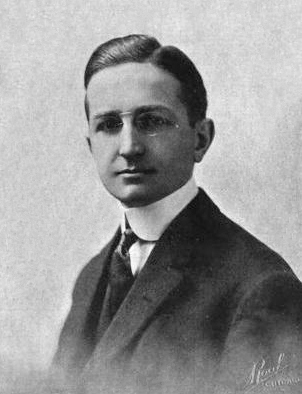
Ernest Martin Skinner was an American pipe organ builder. His electro-pneumatic switching systems advanced organ-building technology in the first part of the 20th century.
Mathias Peter Møller, commonly known as M.P. Möller or Moeller, was a prolific pipe-organ builder and businessman. A native of the Danish island of Bornholm, he emigrated to the United States in 1872 and founded the M.P. Moller Pipe Organ Company in Greencastle, Pennsylvania, in 1875. The city of Hagerstown, Maryland, took notice of Möller's early successes and induced him to move his business there in 1881 to help make it a viable business center in Western Maryland. The company remained in business in Hagerstown until 1992, with hundreds of employees at its peak and a lifetime production of over 12,000 instruments.
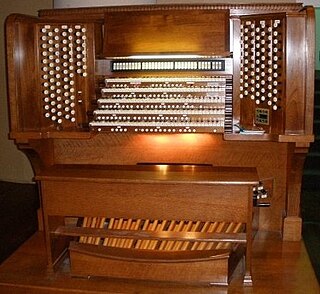
The symphonic organ is a style of pipe organ that flourished during the first three decades of the 20th century in town halls and other secular public venues, particularly in the United States and the United Kingdom. It has roots in 19th-century Europe, and is a variation of the classical pipe organ. It features expanded capabilities, with many pipes imitative of orchestral instruments, and with multiple expressive divisions and organ console controls for seamlessly adjusting volume and tone, generally with electric organ actions and winding. These expansions let the organist approximate a conductor's power to shape the tonal textures of Romantic music and orchestral transcriptions. These organs are generally concert instruments as opposed to church organs. The symphonic organ has seen a revival in the US, Europe and Japan, particularly since the 1980s.
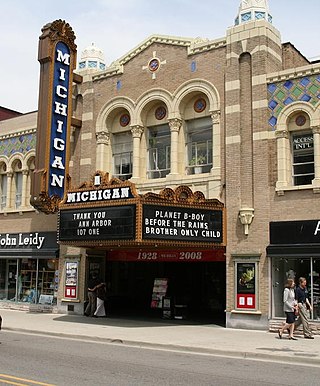
The Michigan Theater is a movie palace in Ann Arbor, Michigan, United States, near the Central Campus of the University of Michigan. It shows independent films and stage productions, and hosts musical concerts.

The Cathedral of St. Joseph in Hartford, Connecticut, United States, is the mother church and seat of the Archdiocese of Hartford. Dedicated on May 15, 1962, it stands on the site of the old cathedral which had been destroyed in a fire. It is located on Farmington Avenue just outside downtown Hartford.
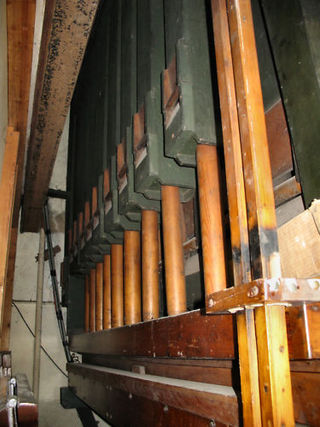
Robert Hope-Jones was an English musician who is considered to be the inventor of the theatre organ in the early 20th century. He thought that a pipe organ should be able to imitate the instruments of an orchestra, and that the console should be detachable from the organ.
E. and G. G. Hook was a pipe organ designing and manufacturing company, located in Boston, Massachusetts, which operated from 1827 to 1935. It was started, and originally run, by brothers Elias and George Greenleaf Hook.

The Boardwalk Hall Auditorium Organ, also known as the Midmer-Losh and the Poseidon, is the pipe organ in the Main Auditorium of the landmark Boardwalk Hall in Atlantic City, New Jersey. The musically versatile instrument was built by the Midmer-Losh Organ Company during 1929–1932. It is the largest organ in the world, as measured by the number of pipes – officially 33,112, but the exact number is uncertain. After decades of accumulated damage from water, building renovations, neglect, and insufficient funding, now a multi-million-dollar restoration program is gradually returning the organ to full operability.
Orgues Létourneau Limitée of Saint-Hyacinthe, Quebec is a prominent Canadian builder and restorer of pipe organs. The company was founded in 1979 by Fernand Létourneau, who served as president, owner and artistic director of the firm until 2019. In 2019, Fernand Létourneau sold the company to a long-time employee, Dudley Oakes.

The Medinah Temple is a Moorish Revival building in Chicago, Illinois, United States. It is located on the Near North Side at 600 N. Wabash Avenue, extending from Ohio Street to Ontario Street.

Lovely Lane United Methodist Church is a historic United Methodist church at 2200 St. Paul Street in the Charles Village neighborhood of Baltimore, Maryland, United States.

The Basilica of the Immaculate Conception is a Roman Catholic church located at 74 West Main Street in Waterbury, Connecticut.
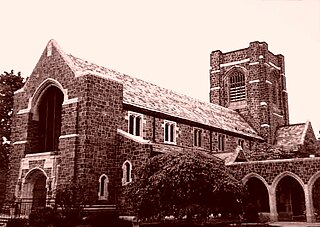
St. John's is an Episcopal Church located at 679 Farmington Avenue in West Hartford, Connecticut near the Hartford, Connecticut, city line. The parish was founded in 1841 as St. John's Episcopal Church in Hartford. The church's present building, designed by famed architect Bertram Grosvenor Goodhue, opened in 1909. It is noted for its reredos designed by Mr. Goodhue and executed by prominent sculptor Lee Lawrie; its organ, Opus 2761 by Austin Organs, Inc., with 64 ranks and 3721 pipes; and its thirty-six stained glass windows by designers/manufacturers such as the Harry Eldredge Goodhue Company of Cambridge, Massachusetts, Wilbur H. Burnham Studios of Boston, Massachusetts, and London, England's James Powell and Sons.
The Midmer-Losh Organ Company is a defunct pipe organ building business located in Merrick, New York.

The Cathedral Church of St. Peter is an Episcopal cathedral in St. Petersburg, Florida, United States. It is the seat of the Diocese of Southwest Florida. In 2004 it was included as a contributing property in the Downtown St. Petersburg Historic District on the National Register of Historic Places.

Hinners Organ Company was an American manufacturer of reed and pipe organs located in Pekin, Illinois. Established in 1879 by German-American John Hinners, the firm grew through several partners, becoming Hinners & Fink in 1881, Hinners & Albertsen in 1886, and Hinners Organ Company in 1902. In the 1920s Hinners established a subsidiary, the Illinois Organ Supply Company, which mass-produced parts for Hinners and other firms. Business declined in the 1930s due to the Great Depression, changing technology, and increasing competition. Hinners became a service company in 1936 and closed in 1942.
